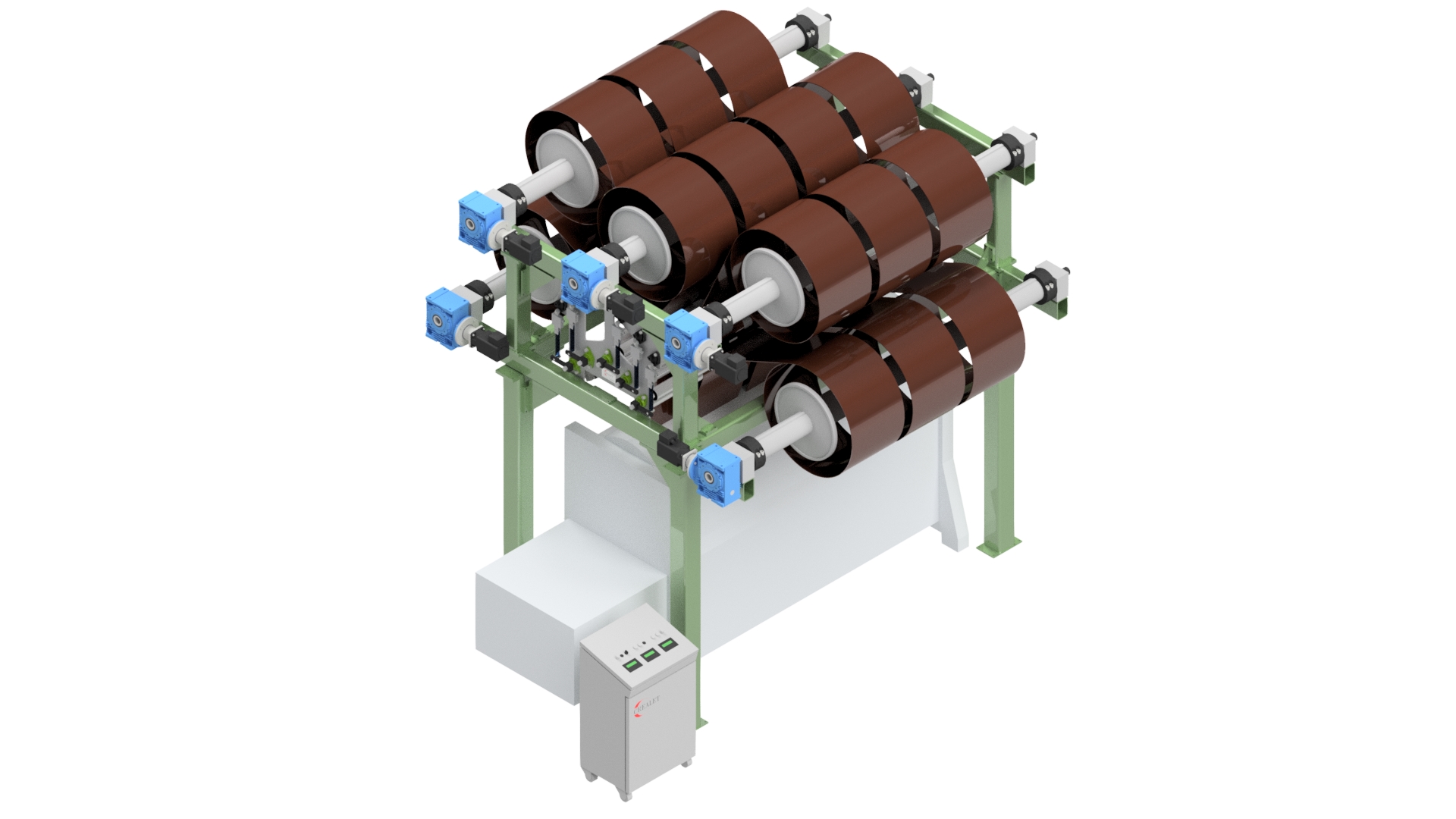Development of the warp feed on weaving machines
In the past, the fabric was woven on handlooms with fixed warp beams which were locked by a locking device. After the production of a certain fabric length it could be loosened so that more warp could be released. Here’s a recap of warp feed development, starting in the 18th century up to today’s highly sophisticated electronic warp feed systems.
Beginning of Warp Feed development
With the introduction of the mechanical loom at the end of the 18th century the development of the warp feed began. For a perfect weaving process a constant warp tension is essential. For this purpose, friction brakes were initially used. These were chain-, rope- or shoe brakes.
The disadvantage of these systems was that the warp tension increased with decreasing warp diameters. Therefore, in order to be able to produce a good fabric quality, the weavers had to readjust the warp tension constantly. Later these so-called passive devices were replaced by active let-off regulators that set the warp beam in motion with a mechanical gear. Thus, the warp material was released in accordance to the required warp amount. These mechanically let-off regulators kept the warp tension more or less constant.
An essential requirement for a perfect operation of the devices was the proper adjustment and maintenance. Positive let-off regulators were mainly used to drive the main beam in the loom. For the regulation of the beam in high position, for fantasy fabric, mainly negative braking devices were used.
The first motorized Warp Let-Off by Swiss Willy GROB AG
So that no re-adjustment was necessary for fantasy warp, in 1983 Willy GROB AG developed the first motorized warp let-off. Since that time I have been dealing with the electronic feeding of warp threads to wide and narrow looms as well as warp knitting machines.
In the year 2003 the company CREALET was founded based of many years of experience. It specializes in the development and production of electronic warp let-off systems for special applications. Here too, the development continues!
Increasingly complex challenges in individuality, variability and safety
The demands on the warp let-off system of the future will be more diverse and challenging in relation to individuality and variability as well as safety. For highly complex textiles it is necessary to control several warp beams with variable warp thread speed and warp tension. The process parameters must be visible, reproducible, documentable and traceable. Of course, the parameter data must be transmitted and communicated easily, as well.

A Modern Warp Beam Frame for Knitting Machines
Holistic approach for customized solutions
As an engineering company we focus on the development of innovative systems. Only a holistic view of textile technology, mechanics, electronics and electrical engineering, control engineering and information technologies enables you to have systems optimally designed. Our direct cooperation with customers and machine manufacturers as well as international research partners guarantees a regular know-how transfer.
If you are interested in a customized solution or you do have any questions do not hesitate to contact us.
Walter Wirz



